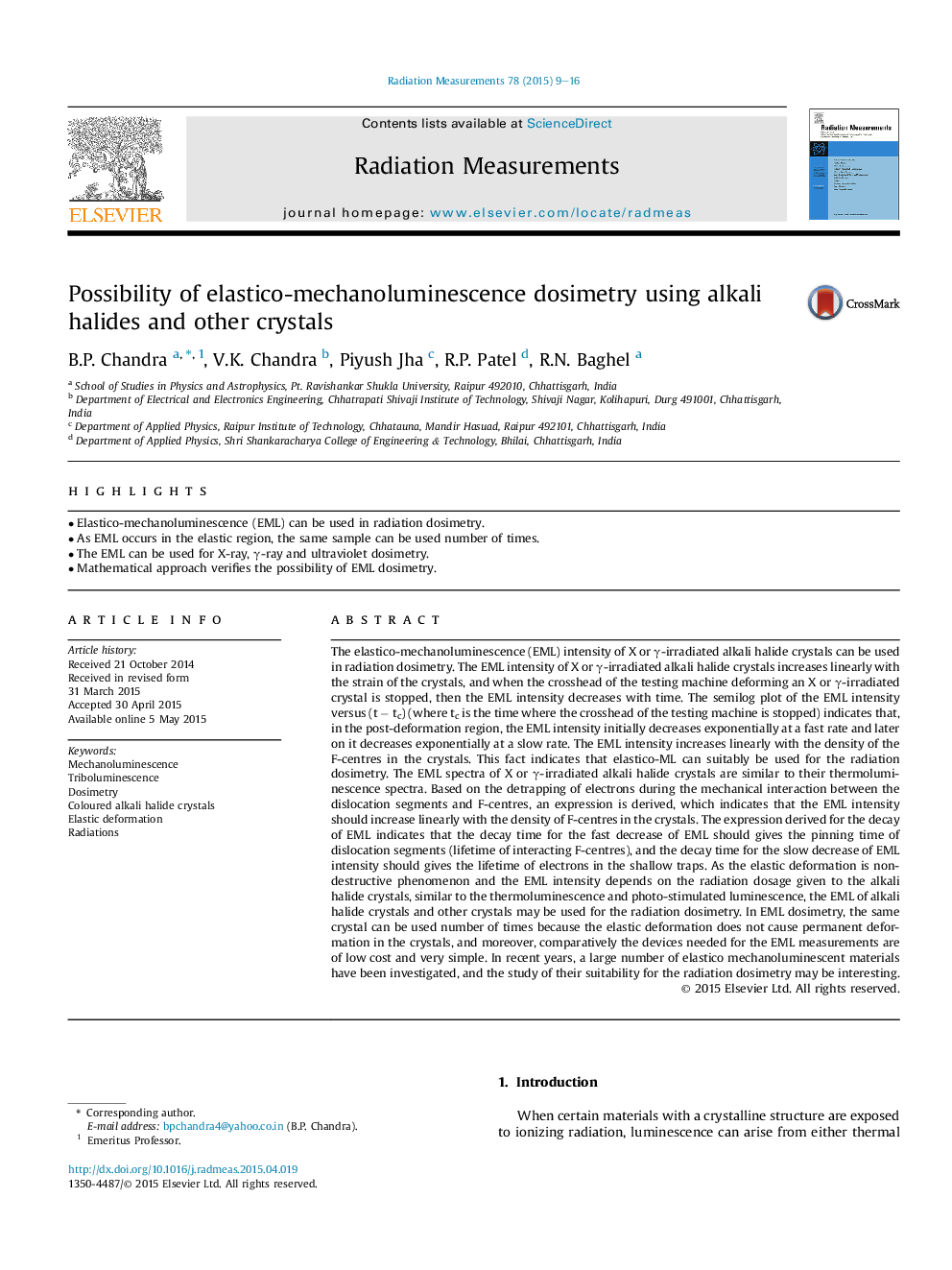| کد مقاله | کد نشریه | سال انتشار | مقاله انگلیسی | نسخه تمام متن |
|---|---|---|---|---|
| 1883435 | 1533412 | 2015 | 8 صفحه PDF | دانلود رایگان |
• Elastico-mechanoluminescence (EML) can be used in radiation dosimetry.
• As EML occurs in the elastic region, the same sample can be used number of times.
• The EML can be used for X-ray, γ-ray and ultraviolet dosimetry.
• Mathematical approach verifies the possibility of EML dosimetry.
The elastico-mechanoluminescence (EML) intensity of X or γ-irradiated alkali halide crystals can be used in radiation dosimetry. The EML intensity of X or γ-irradiated alkali halide crystals increases linearly with the strain of the crystals, and when the crosshead of the testing machine deforming an X or γ-irradiated crystal is stopped, then the EML intensity decreases with time. The semilog plot of the EML intensity versus (t − tc) (where tc is the time where the crosshead of the testing machine is stopped) indicates that, in the post-deformation region, the EML intensity initially decreases exponentially at a fast rate and later on it decreases exponentially at a slow rate. The EML intensity increases linearly with the density of the F-centres in the crystals. This fact indicates that elastico-ML can suitably be used for the radiation dosimetry. The EML spectra of X or γ-irradiated alkali halide crystals are similar to their thermoluminescence spectra. Based on the detrapping of electrons during the mechanical interaction between the dislocation segments and F-centres, an expression is derived, which indicates that the EML intensity should increase linearly with the density of F-centres in the crystals. The expression derived for the decay of EML indicates that the decay time for the fast decrease of EML should gives the pinning time of dislocation segments (lifetime of interacting F-centres), and the decay time for the slow decrease of EML intensity should gives the lifetime of electrons in the shallow traps. As the elastic deformation is non-destructive phenomenon and the EML intensity depends on the radiation dosage given to the alkali halide crystals, similar to the thermoluminescence and photo-stimulated luminescence, the EML of alkali halide crystals and other crystals may be used for the radiation dosimetry. In EML dosimetry, the same crystal can be used number of times because the elastic deformation does not cause permanent deformation in the crystals, and moreover, comparatively the devices needed for the EML measurements are of low cost and very simple. In recent years, a large number of elastico mechanoluminescent materials have been investigated, and the study of their suitability for the radiation dosimetry may be interesting.
Journal: Radiation Measurements - Volume 78, July 2015, Pages 9–16
